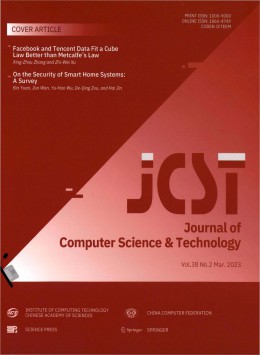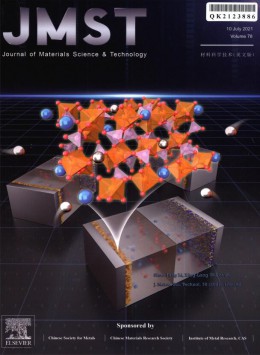
Nuclear Science and Techniques雜志SCI期刊CSCD期刊統計源期刊
Nuclear Science and Techniques
同學科期刊級別分類 CSSCI南大期刊 北大期刊 CSCD期刊 統計源期刊 部級期刊 省級期刊
- 雙月刊 出版周期
- 31-1559/TL CN
- 1001-8042 ISSN
- 主管單位:中國科學院
- 主辦單位:中國核學會;中國科學院上海原子核研究所
- 郵發代號:4-647
- 創刊時間:1990
- 開本:B5
- 出版地:上海
- 語種:英語
- 審稿周期:1-3個月
- 影響因子:0.09
- 被引次數:125
- 數據庫收錄:
CSCD 中國科學引文數據庫來源期刊(含擴展版)、統計源期刊(中國科技論文優秀期刊)、知網收錄(中)、維普收錄(中)、萬方收錄(中)、CA 化學文摘(美)、SA 科學文摘(英)、SCI 科學引文索引(美)、Pж(AJ) 文摘雜志(俄)、國家圖書館館藏、上海圖書館館藏
Nuclear Science and Techniques雜志簡介
《Nuclear Science and Techniques》創刊于1989年,郵發代碼:4-647,由中國科學院上海應用物理研究所;中國核學會主辦。上海市核學會協辦都的綜合性學術期刊。
《Nuclear Science and Techniques》旨在通過介紹國內外最新核科技成果,反映當前中國核科學技術發展的動向和學術水平。主要方向為同步輻射技術及應用、低能加速器技術、射線技術及應用、核化學、放射化學、放射性藥物和核醫學、核電子學與儀器、核物理與交叉學科研究、核能科學與工程等。本刊被SCI-E、CA、SA、CSCD等數據庫收錄。
《Nuclear Science and Techniques》是中國核學會會刊,由國內外核研究領域的著名科學家組成編委會。它刊登理論、實驗和應用核物理,放射化學和輻射化學,核測量方法和儀器,核能與石材料科學、生命科學、農業、地球和環境科學方面的應用,是中國在核研究領域中唯一的一份英文期刊。發表的論文為國際六大著名檢索期刊中的五個所收錄。
Nuclear Science and Techniques雜志欄目設置
同步輻射技術及應用、低能加速器技術、射線技術及應用、核化學、放射化學、放射性藥物和核醫學、核電子學與儀器、核物理與交叉學科研究、核能科學與工程
Nuclear Science and Techniques雜志榮譽信息
Nuclear Science and Techniques雜志訂閱方式
地址:上海市800-204信箱 聯合編輯部,郵編:201800。
Nuclear Science and Techniques雜志社投稿須知
1.Title: Titles should be no more than three typeset lines (generally 135 characters including spaces) and should be comprehensible to a broad scientific audience.
2.Author affiliation: Include department, institution, and complete address, with the ZIP/postal code, for each author. Use superscripts to match authors with institutions.
3.Corresponding author: The name, complete address, telephone number, and e-mail address of the author to whom correspondence and proofs should be sent. E-mail addresses will appear in print and online.
4.Body of the paper, including abstract, keywords, introduction, experimental section, results and discussion, conclusion, acknowledgement and references.
5.Abstract: Provide an abstract of no more than 200 words. Abstracts should provide a succinct, informative summation of the most important results and conclusions.
6.Key words: Keywords are listed below the abstract of the manuscript. At least three keywords are required at submission.
7.Introduction: The Introduction should provide a statement outlining the motivation for the research and should accurately place the investigations in context with previous or current work in the field.
8.Experimental Section: The Experimental Section should provide a clear, unambiguous description of materials, methods, and equipment in sufficient detail to permit repetition of the work elsewhere. Repetitive descriptions of a general procedure should be avoided.
9.Results and Discussion: These sections should present the results, and their interpretation, in context with existing knowledge in a clear and concise manner.
10.Conclusion: A conclusion section should be provided in instances where the key elements of the results and discussion may require amplification or clarification. This section should not simply restate the Abstract.
11.Acknowledgments: List acknowledgments.
12.References: References must be in NST style. Only published or in-press papers and books may be cited in the reference list. Unpublished abstracts of papers presented at meetings or references to ‘‘data not shown’’ are not permitted. Each literature reference should be assigned one number and placed in the text as a superscript numeral.
Nuclear Science and Techniques雜志數據信息
影響因子和被引次數
雜志發文量
Nuclear Science and Techniques雜志發文分析
主要資助課題分析
| 資助課題 | 涉及文獻 |
| 國家重點基礎研究發展計劃(973Program) | 12 |
| 國家高技術研究發展計劃(863Program) | 8 |
| 上海市教育委員會重點學科基金(S30109) | 8 |
| 國家自然科學基金(81160213) | 7 |
| 國家自然科學基金(11120101005) | 7 |
| 國家自然科學基金(60602065) | 6 |
| 國家自然科學基金(11075198) | 6 |
| 國家自然科學基金(s11135011) | 6 |
| 國家自然科學基金(10675151) | 6 |
| 國家自然科學基金(10979074) | 6 |
主要資助項目分析
| 資助項目 | 涉及文獻 |
| 國家自然科學基金 | 1234 |
| 國家重點基礎研究發展計劃 | 92 |
| 中國博士后科學基金 | 31 |
| 國家高技術研究發展計劃 | 25 |
| 上海市自然科學基金 | 19 |
| 國家教育部博士點基金 | 16 |
| 上海市教育委員會重點學科基金 | 13 |
| 中國科學院知識創新工程 | 13 |
| 安徽省自然科學基金 | 12 |
| 廣東省自然科學基金 | 8 |




